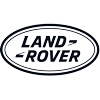 1998 Land Rover Freelander I Soft Top Dimensions, Size & Specs
1998 Land Rover Freelander I Soft Top Dimensions, Size & SpecsMeasurements of the 1998 Land Rover Freelander I Soft Top, engineered for optimal performance and comfort
| Dimensions | |
|---|---|
| Length: | 4368-4433 mm172.0-174.5 in14.3-14.5 ft |
| Width: | 1809 mm71.2 in5.9 ft |
| Height: | 1708-1760 mm67.2-69.3 in5.6-5.8 ft |
| Trunk Capacity: | 311-370 liter11.0-13.1 cu ft |
| Trunk Capacity (Max): | 1194-1315 liter42.2-46.4 cu ft |
| Weight Specifications | |
| Curb Weight: | 1380-1615 kg3042-3560 lbs |
| Maximal permitted Weight: | 1960-2080 kg4321-4586 lbs |
| Tire Specifications | |
| Rims Size: |
|
| Tire Sizes: |
|
The Land Rover Freelander I Soft Top, produced from 1998 to 2006, is a compact SUV designed for versatility and adventure. With a length ranging between 4368 mm (172 inches) and 4433 mm (174.6 inches), it strikes a balanced footprint suitable for urban environments and off-road excursions. Its width spans from 1805 mm (71 inches) to 1809 mm (71.2 inches), ensuring a stable stance on various terrains. The height varies between 1708 mm (67.2 inches) and 1760 mm (69.3 inches), offering good headroom and a commanding driving position.
The curb weight of the Freelander I Soft Top ranges from 1380 kg (3042 lbs) to 1615 kg (3560 lbs), depending on specific configurations, providing a sturdy yet manageable vehicle weight for its class. The maximum permissible weight lies between 1960 kg (4321 lbs) and 2080 kg (4586 lbs), indicating its robust build capable of carrying passengers and cargo efficiently.
Luggage capacity is practical and adaptable; with rear seats in place, the Freelanders offer between 311 liters (11 cubic feet) and 370 liters (13 cubic feet) of storage space. Folding the rear seats expands the luggage compartment significantly to between 1194 liters (42 cubic feet) and 1315 liters (46 cubic feet), making it ideal for larger cargo or outdoor gear.
Equipped typically with 15-inch rims and tire sizes of 195/80 R15 S, the Freelander I Soft Top combines reliable traction with a comfortable ride, suitable for on-road cruising and light off-roading. This generation uniquely blends Land Rover’s off-road heritage with the needs of everyday driving, making the Freelander I Soft Top an appealing choice for those seeking a versatile, compact SUV.
Discover the standout features that make the 1998 Land Rover Freelander I Soft Top a leader in its class
Have a question? Please check our knowledgebase first.
The Land Rover Freelander I Soft Top, produced from 1998 to 2006, has an overall length ranging between 4368 mm and 4433 mm (172 inches to 174.5 inches). This slight variation in length depends on specific trim levels and optional equipment. The length places it firmly within the compact SUV category, allowing for a good balance between interior space and maneuverability. This size makes it convenient for urban driving while still providing substantial cargo and passenger room typical of SUVs.
The width of the Freelander I Soft Top ranges from 1805 mm to 1809 mm (approximately 71.1 to 71.2 inches). This moderate width is standard for compact SUVs of its class, providing a stable driving experience without being overly bulky. The width allows for reasonable ease when navigating narrow city streets or parking spaces, although attention is needed in tight spots typical for larger vehicles. The dimensions strike a practical compromise, making it comfortable for both urban and off-road use.
The Freelander I Soft Top features a height between 1708 mm and 1760 mm (67.2 inches to 69.3 inches). This height contributes to a commanding driving position which enhances visibility on and off the road. Additionally, the taller profile provides generous headroom for passengers, improving overall comfort during travel. The elevated stance is typical for SUVs, facilitating better ground clearance for off-road capability while still maintaining a balance with aerodynamic efficiency.
The curb weight of the Freelander I Soft Top varies from 1380 kg to 1615 kg (3042 lbs to 3561 lbs), depending on configuration and trim. Maximum weight capacity ranges between 1960 kg and 2080 kg (4321 lbs to 4586 lbs). The curb weight affects fuel efficiency and handling characteristics—lighter models offer more agile performance, while heavier versions can provide more stability and durability. The maximum weight encompasses passengers, cargo, and optional payloads, reflecting the vehicle's robust utility for both daily driving and off-road adventures.
Cargo capacity with rear seats upright ranges from 311 liters to 370 liters (approximately 11 to 13 cubic feet), which is typical for compact SUVs. Folding down the rear seats significantly expands the space to between 1194 liters and 1315 liters (42 to 46.4 cubic feet). This versatility supports transporting a variety of cargo, from groceries and luggage to larger items like camping gear or sports equipment. The split-fold rear seat design enhances practical usage, making the Freelander suitable for work or leisure activities requiring substantial cargo flexibility.
Yes, the Freelander I Soft Top generally fits into a standard garage. With a length between 4368 mm to 4433 mm (172 to 174.5 inches), a width about 1805 mm to 1809 mm (71.1 to 71.2 inches), and a height ranging from 1708 mm to 1760 mm (67.2 to 69.3 inches), it occupies a typical compact SUV footprint. Standard single-car garages typically provide at least 6 meters (19.7 feet) in length and 3 meters (9.8 feet) in width, sufficient to accommodate the car comfortably, with room to open doors. However, owners should consider clearance for roof racks or accessories that might add to the height.
The Freelander I Soft Top was the inaugural generation launched in 1998, effectively replacing the Land Rover Discovery Series or part of discontinued models in the compact segment. As the first Freelander generation, it introduced a smaller, more urban-friendly footprint compared to larger Land Rovers, with an emphasis on compact off-road performance. Its size made it more maneuverable and easier to park than predecessors, aiming at a broader market wanting SUV capability in a smaller vehicle. Improvements included better fuel efficiency, modern styling, and increased versatility with options such as soft-top variants for open-air driving.
Compared to contemporaries like the Toyota RAV4, Jeep Cherokee, and Honda CR-V of the late 1990s and early 2000s, the Land Rover Freelander I Soft Top was slightly larger in height and offered better off-road capability due to its more rugged Land Rover heritage and terrain response features. Its length and width were comparable to peers, making it equally practical for urban environments. However, the Soft Top variant added unique styling and versatility with open-air options. While competitors focused more on on-road comfort and fuel economy, the Freelander combined adequate size with genuine off-road DNA, appealing to buyers looking for adventure-friendly compact SUVs.
The Freelander I Soft Top comes equipped with 15-inch rims, paired with tire sizes of 195/80 R15 S or 195/80 R15. These tire dimensions offer a good balance between comfort, road grip, and off-road traction. The relatively tall sidewall (aspect ratio 80) helps absorb imperfections in rough terrains and provides better cushioning for off-road use. This setup aids in maintaining vehicle stability on a variety of surfaces while ensuring acceptable handling responsiveness for daily driving. The modest rim size also simplifies tire replacement and maintains durability under demanding conditions.
The Freelander I Soft Top boasts a combination of versatility, off-road prowess, and practical urban usability. Designed primarily as a compact SUV, it includes features such as all-wheel drive, terrain response systems, and decent ground clearance that enhance cross-country driving. The soft top convertible body style adds a unique appeal, allowing open-air driving for outdoor enthusiasts. Despite its ruggedness, the vehicle delivers comfortable seating for passengers, decent luggage capacity, and relatively economical fuel consumption for its class. The blend of these features established the Freelander as an innovative choice among early compact SUVs, suitable for both city drivers and adventure seekers alike.
Discover similar sized cars.
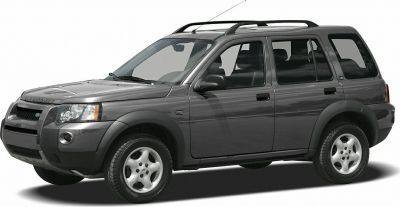
| Production: | 1998-2006 |
|---|---|
| Model Year: | 1998 |
| Length: | 4368-4445 mm172.0-175.0 in |
| Width: | 1809 mm71.2 in |
| Height: | 1708-1760 mm67.2-69.3 in |
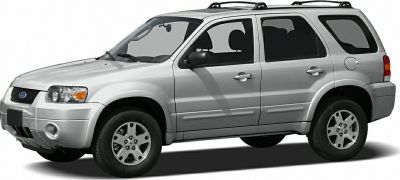
| Production: | 2000-2007 |
|---|---|
| Model Year: | 2001 |
| Length: | 4394-4442 mm173.0-174.9 in |
| Width: | 1781 mm70.1 in |
| Height: | 1702-1775 mm67.0-69.9 in |
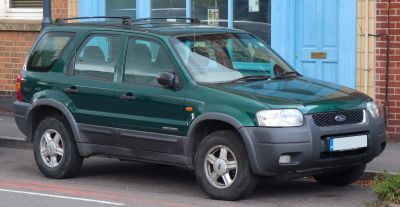
| Production: | 2000-2007 |
|---|---|
| Model Year: | 2000 |
| Length: | 4394-4441 mm173.0-174.8 in |
| Width: | 1781-1825 mm70.1-71.9 in |
| Height: | 1722-1762 mm67.8-69.4 in |
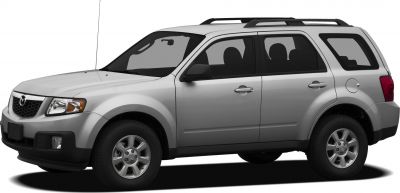
| Production: | 2000-2011 |
|---|---|
| Model Year: | 2001 |
| Length: | 4395 mm173.0 in |
| Width: | 1800-1825 mm70.9-71.9 in |
| Height: | 1710-1765 mm67.3-69.5 in |
